In today's world, the field of Information Technology (IT) is not just an academic or professional domain but an integral part of daily life. From business operations and education to healthcare and entertainment, IT continues to reshape how we work, learn, and interact with each other. To gain a deeper understanding of IT, let's explore its historical development, significance, and the contributions it makes to modern society.
Information Technology (IT) encompasses the use of computers and software to manage, process, and communicate information. As we navigate through the digital age, IT extends beyond software development and network management to include areas like cybersecurity, big data processing, and much more. The rapid evolution of technology has positioned IT as a pivotal sector influencing every aspect of societal functions, from enhancing business operations to facilitating daily communication.
The IT industry's journey began in the 1940s with the advent of the first computers, marking the start of a significant evolutionary process. The introduction of the Internet in the 1990s revolutionized human communication, work, and entertainment, ushering in a new digital era. Presently, advancements in cloud computing, artificial intelligence (AI), and big data continue to underscore IT's central role in driving innovation and societal progress.
The significance of IT in today's world cannot be overstated. It not only simplifies everyday life but also plays a crucial role in economic growth by generating millions of global job opportunities. IT acts as a catalyst for innovation and development across various sectors, including healthcare, education, manufacturing, and financial services, making the mastery and application of IT a key determinant of individual and organizational success.
This introduction sets the stage for a comprehensive exploration of the IT industry, offering insights into its dynamic nature and the abundant opportunities it presents.
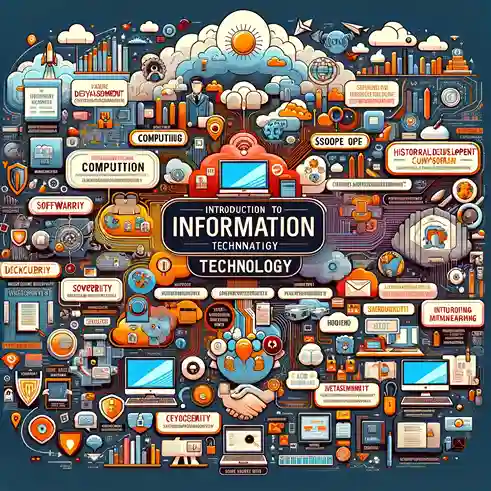
The history of the Information Technology industry begins in the 1940s with the development of the first computers. These initial stages marked significant milestones, transitioning from mechanical computing devices to the electronic computers of the 20th century. This era laid the groundwork for the computational capabilities we depend on today. From bulky, room-sized machines to the introduction of personal computers in the 1970s and 1980s, each phase represented breakthroughs in technology that expanded computing power and accessibility.
The proliferation of the Internet in the 1990s represented a pivotal turning point not just for the IT industry but for global society as a whole. The Internet transformed the way information is accessed and shared, catalyzing the growth of the digital economy, social networking, and online communication. This period also saw the rise of e-commerce, changing traditional business models and creating new opportunities for trade and entrepreneurship.
In recent years, the IT industry has witnessed rapid advancements in technologies such as cloud computing, artificial intelligence (AI), and big data. Cloud computing revolutionized data storage and access, making it more flexible and scalable. AI and machine learning have paved the way for intelligent systems capable of learning and making decisions, significantly impacting sectors like healthcare, finance, and manufacturing. Big data analytics has become essential for businesses to derive insights from vast amounts of data, enhancing decision-making and strategic planning.
These developments underscore the IT industry's critical role in shaping the future, highlighting its influence on innovation, economic growth, and the transformation of societal norms and practices. The historical progression of IT not only reflects its foundational importance but also points to a future where technology continues to drive significant changes in every aspect of human life.
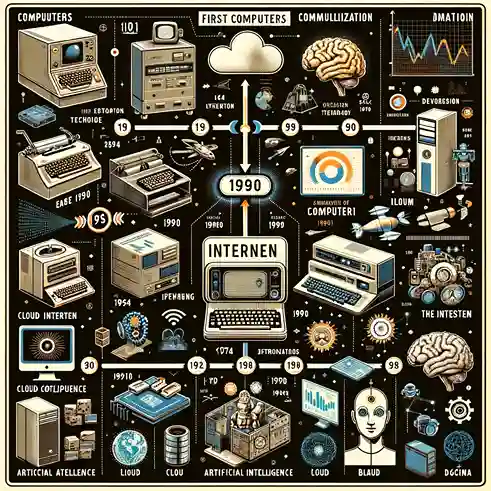
Application development involves creating computer programs or sets of programs to perform specific tasks for users. This process includes planning, designing, coding, testing, and maintaining software. Application development can target various platforms, including web applications, mobile apps, and desktop software, requiring creativity, problem-solving skills, and programming expertise.
Web design entails creating websites and web applications. It involves not just the aesthetic aspects, such as layout, color, and typography but also user experience (UX) design and search engine optimization (SEO). Web design demands a blend of graphic design skills and technical programming abilities to produce user-friendly and visually appealing websites.
Game development is the process of creating video games, encompassing initial concepts to final product release. It includes game design, programming, graphic and sound design, and testing. Game development requires collaboration across various disciplines and is often undertaken by large teams to bring engaging and complex games to life.
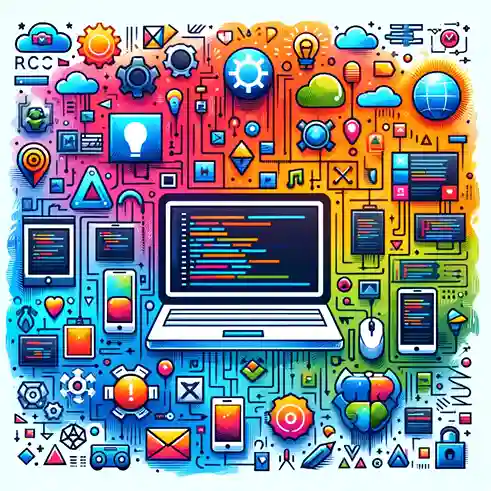
This area focuses on creating the physical components of computers and electronic devices, including CPUs, memory, motherboards, and peripherals. It requires extensive knowledge of electrical engineering and electronics, along with skills in circuit design and production management.
Embedded systems are computer systems designed to perform dedicated functions within larger systems, found in devices from mobile phones to automobiles and household appliances. Developing embedded systems requires programming hardware and software, as well as knowledge of real-time operating systems (RTOS).
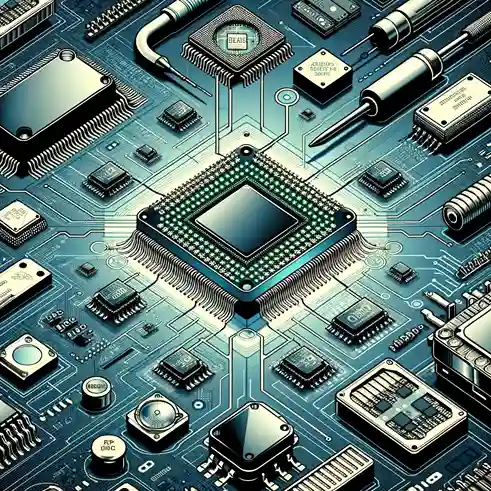
Network management involves deploying, maintaining, and monitoring computer networks to ensure they operate smoothly and efficiently. This includes installing and configuring network devices, monitoring network performance, and troubleshooting issues, necessitating a deep understanding of network protocols, hardware, and software.
Information security is the practice of protecting information and information systems from unauthorized access, use, disclosure, disruption, modification, or destruction. It encompasses measures such as encryption, firewalls, intrusion detection, and prevention, as well as policies and procedures to secure data.

AI involves simulating human intelligence processes by machines, including learning, reasoning, and self-correction. Fields within AI include machine learning, natural language processing (NLP), and computer vision. AI applications are vast, ranging from automated manufacturing to data analysis.
Machine learning, a subset of AI, focuses on developing systems that learn from data, improving their accuracy over time without being explicitly programmed. It is a key tool in data analysis, uncovering patterns and insights in large data sets.
Data science combines techniques from mathematics, statistics, machine learning, and software engineering to extract insights and knowledge from data. It involves data analysis, visualization, and the application of algorithms to solve complex problems across various domains.
These sectors illustrate the breadth and depth of the Information Technology industry, highlighting its significance in driving innovation and addressing complex challenges in today's digital world.
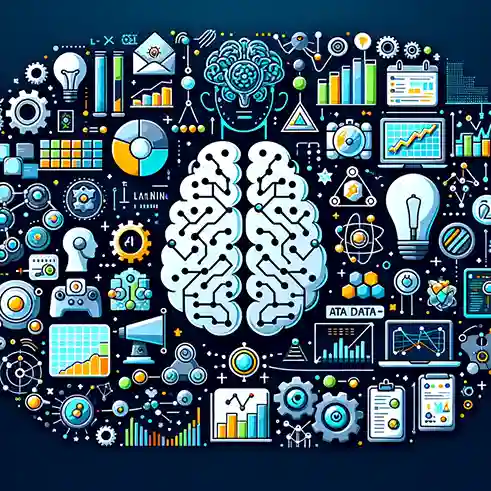
Information Technology plays a crucial role in enhancing business management by providing advanced Management Information Systems (MIS). These systems help organizations collect, store, and analyze business data to support decision-making, optimize workflows, and improve operational efficiency.
Automation is one of the key benefits that IT brings to businesses. Systems and software automation help reduce time and costs, eliminate human errors, and increase productivity and customer service quality.
CRM software uses information technology to organize, automate, and synchronize all business activities around customers, including marketing, sales, and customer service. CRM helps businesses better understand their customers, develop targeted marketing strategies, and provide personalized customer service.

E-learning utilizes information technology to facilitate learning remotely via the Internet. It offers a flexible, cost-effective mode of education, allowing learners to study anytime, anywhere, at their own pace. E-learning expands the scale and reach of education, making learning opportunities accessible to everyone.
LMS is a web-based platform that helps manage, track, report, and deliver educational courses or training programs. It supports the creation and management of educational content, facilitates interaction between students and teachers, and monitors learning progress. LMS is crucial for implementing remote education and training programs.
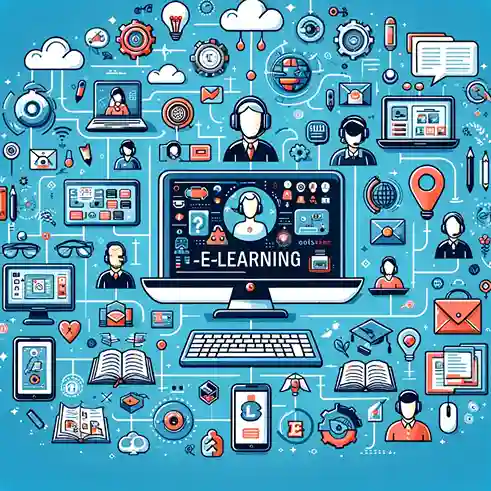
Information technology uses EHR systems to manage electronic medical records, improving workflows in healthcare facilities and enhancing patient care quality. It improves patient information management, optimizes care processes, and facilitates information sharing among healthcare professionals.
Telemedicine employs information and communication technology to provide healthcare services remotely. It enables patients to access medical services without visiting healthcare facilities, reducing geographical barriers and wait times, and alleviating pressure on healthcare facilities.
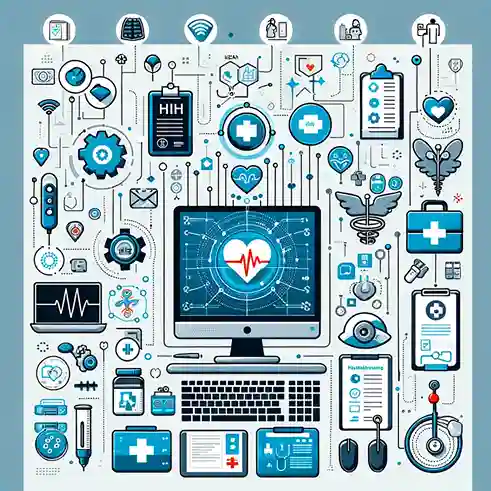
In manufacturing, IoT enables the connection and automation of production processes using sensors and smart devices. It enhances manufacturing efficiency, product quality monitoring, and inventory management.
Information technology improves supply chain management by optimizing transportation, forecasting demand, and managing supply sources. Supply chain management systems create a seamless process from manufacturers to consumers, reducing costs and delivery times, and enhancing market responsiveness.
These sections illustrate how the Information Technology industry plays a vital role across various sectors, driving innovation, efficiency, and connectivity.

One of the biggest challenges facing the Information Technology industry is ensuring security and privacy. The rapid technological advancement and increasing reliance on digital data have led to significant risks related to cybersecurity and data breaches. Businesses and organizations need to invest significantly in information security measures and comply with data protection regulations to safeguard customer information and maintain trust.
As technology continues to evolve, there is a growing demand for skilled professionals in the Information Technology industry. This presents both opportunities for individuals in the field and challenges for organizations in recruiting and training employees with the necessary skills. Enhancing the quality of education and training is key to meeting this demand.
The Information Technology industry offers numerous opportunities for innovation and business development in the digital age. New technologies like AI, IoT, and blockchain are creating new opportunities for businesses to develop innovative products and services, improve operational efficiency, and enhance customer experiences. At the same time, the advancement of technology also opens up new career opportunities and drives global economic growth.
The Information Technology industry not only presents a promising future for those who pursue it but also serves as a driving force behind economic and social development. For students, equipping themselves with comprehensive knowledge and skills, along with seizing internship opportunities and learning from practical experiences, will be the keys to success in this promising field.
Students aspiring to pursue a career in the Information Technology field need a passion for technology and a willingness to continuously learn new knowledge. Fundamental programming skills are essential, along with problem-solving abilities, logical thinking, and critical analysis. Additionally, teamwork, communication, and time management skills are crucial for success in this field.
Students might face challenges keeping up with the rapid pace of technological advancements, requiring constant updates to their knowledge base. Learning programming and complex IT concepts can sometimes be overwhelming, creating significant pressure. Moreover, applying theoretical knowledge through projects and internships presents a challenge, demanding patience and diligence from students.
The employment rate for graduates from the Information Technology field is generally high due to the significant demand in the labor market for IT professionals. IT is among the fastest-growing industries with a high demand for workforce, especially in the era of digitalization.
IT graduates can occupy various positions, including but not limited to software development, web design, network administration, cybersecurity, data analysis, AI, and technology project management. They can also work in fields like finance, healthcare, education, and manufacturing, where IT plays a crucial role.
Businesses typically look for graduates with solid knowledge in programming, databases, computer networks, and cybersecurity, depending on the job position. Analytical and problem-solving skills, as well as expertise in data analysis and AI, are increasingly common requirements.
Besides professional skills, companies also value soft skills such as teamwork, communication, leadership, and time management. The willingness to learn and adapt to new technologies is also a critical factor for success.
Practical experience through internships or personal projects related to the field is highly important. Many businesses prefer hiring graduates with hands-on experience as it demonstrates their ability to apply knowledge to solve real-world problems.
These sections provide a comprehensive look into the essential aspects for students entering the Information Technology industry, outlining the skills and challenges they might face, the promising employment prospects awaiting them, and the expectations businesses have for new graduates entering the workforce.
In the digital era, the Information Technology (IT) industry plays an undeniable role across various sectors from business and education to healthcare and manufacturing. With its rapid development, the industry offers numerous career opportunities for students, alongside certain challenges in education and career progression. Students pursuing this field need to arm themselves with solid technical knowledge, soft skills, and practical experience to meet the labor market's demands.
However, with support from educational institutions, internship opportunities, and a continuous learning attitude, students can overcome these challenges and make the most of the opportunities this dynamic field offers. Businesses, ranging from startups to multinational corporations, are in constant search for IT talents capable of innovation and adaptation to the fast-evolving technological environment.
In conclusion, the Information Technology industry not only opens up a bright future for those who choose to pursue it but also acts as a catalyst for economic and social development. For students, being well-equipped with comprehensive knowledge and skills, along with seizing practical learning opportunities, will be key to success in the promising IT field.